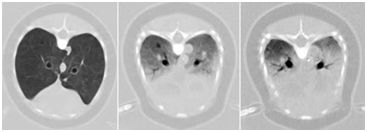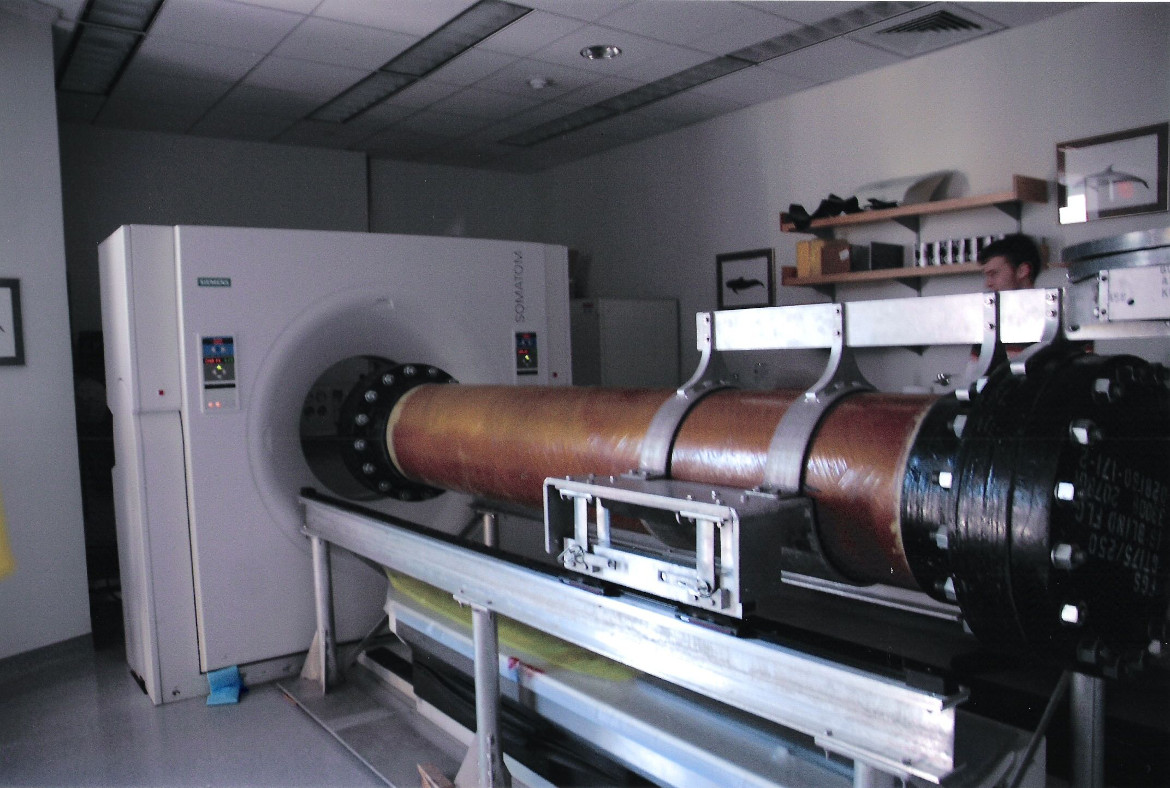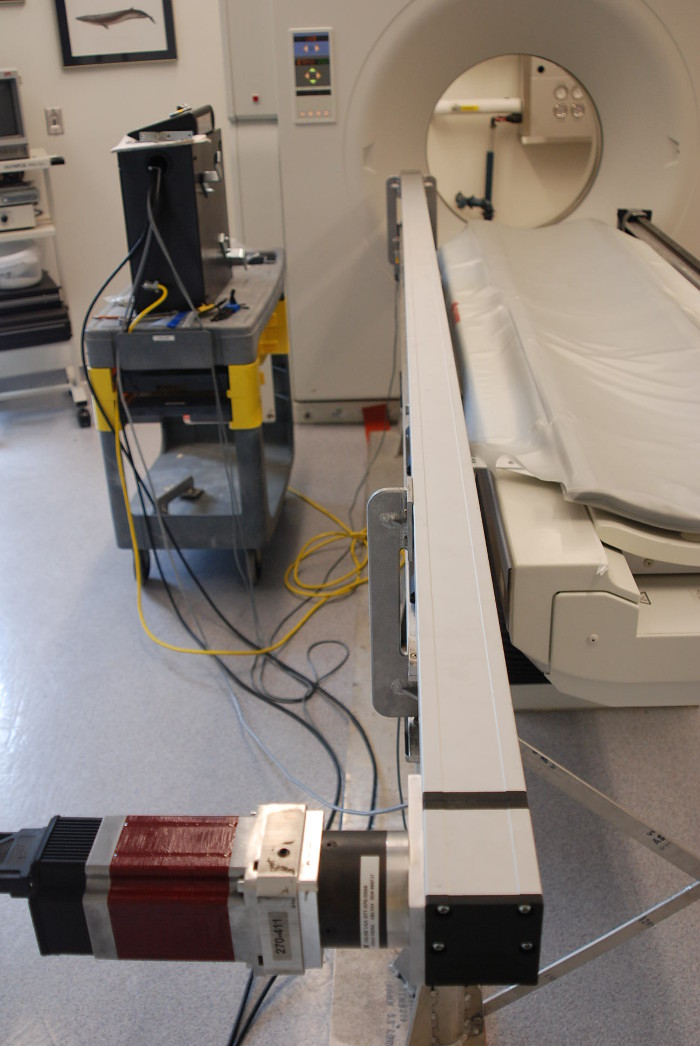Woods Hole: CSI of the oceans?
Donald P. Labriola PE, President, QuickSilver Controls, Inc.
Woods Hole Oceanographic Institution studies sea animals that have washed up to help determine what natural or man-made effects are responsible for the deaths, including the recent dolphin die-off, working with their own CSI group - the Computerized Scanning and Imaging Facility.
A sophisticated CT (computer tomography) scanner is used to obtain high resolution mappings of the various aquatic animals, not just to determine cause of death, but also to understand how they survive in the ocean. Of special interest is understanding more on how echo location operates by studying the auditory anatomy. They are also studying how dolphins can dive deeply and surface quickly, normally without suffering from "the bends" - nitrogen bubbles in the blood stream.

Cross sectional CT scan of the chest of a porpoise. Simulated depths of 0, 50, and 100m depth (left to right), showing the pressure related compression of lung tissue (air in the lung appears as the dark density).


The high resolution scans needed for these and other studies require precise positioning and movement of the animal being studied in a CAT scanner. For some studies, the deceased animal is suspended in water under various pressures to mimic dive gradients. This combination of the animal and the surrounding water can be on the order of 3100 lbs (1400 kg), much higher than the standard tables designed to position people within the scanner. Any positioning error, including vibrations, distort the images and may make the image less useful for resolving the questions of the investigation.
A custom scan drive was designed by Artec Imaging to allow motion on the range of 0.5 to 10 mm per second allowing slice reconstruction down to 0.1mm. The table is synchronized to the motion table normally used to position patients. This allows for ositioning of heavy loads without needing to modify the scanners.
A QuickSilver Controls, Inc . QCI-A34HC-2 motor is used to move the transport table. The high torque capability of the motor combined with the high inertial mismatch capability of the controller allows the table to use the same tuning parameters loaded or unloaded. The resulting motions are very smooth, as needed for accurate scans, while still providing the capability for rapid motions allowing quick positioning of the specimen prior to scanning.
For more information contact:
ARTEC IMAGING: www.ArtecImaging.com
QuickSilver Controls, Inc.: www.QuickSilverControls.com
Woods Hole CSI: csi.whoi.edu
